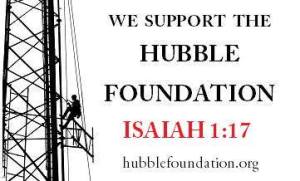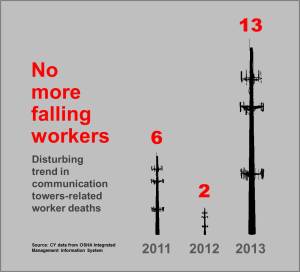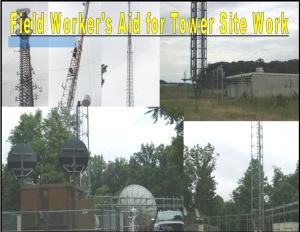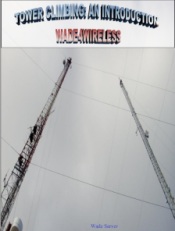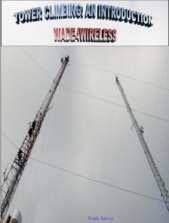Podcast: Play in new window | Download | Embed
Subscribe: Apple Podcasts | RSS
Subscribe!
Hey, this week I want to discuss something that has been on the minds of so many tower workers out there. Would you rescue a fellow climber in trouble? In recent news there have been several stories that someone was left hanging until the fire department arrived to perform the rescue. The good news is that they all are alive today, so all’s well that ends well. Getting home alive really matters when things go wrong. You may forget what matters until you are confronted with a terrible situation.
So back to the point, would you rescue a coworker? Could you rescue a coworker in trouble? I reached out to several groups, and everyone I with thinks that this should be the policy. I have to tell you, everyone I heard from, and talked too said yes. Not one person said they would wait for the rescue team unless absolutely necessary. However, the one comment I got on my blog when the guy was hanging over the edge of the platform on the monopole was that the guy went home alive and he felt the crew did the right thing. I didn’t forget that and that is why I said something in the beginning, they are all alive. That is so important so I am so happy the fire departments have high rescue, really, I thank GOD for that. They are alive. I don’t know why the coworkers didn’t make an attempt but they seemed to do the right thing. Their coworkers are alive.
I need to know, is there a policy out there that would have people not make the attempt? Most of the older tower climbers are well versed in rescue. Did that change? I even heard from a few people with the carriers, (who were not happy that I brought up the whole “carriers devalue climbing” issue) said that everyone on site should be able to do rescue.
I was on a forum of guys that do high tower work and all of them said overwhelmingly that they would attempt the rescue if they felt it was safe. Remember that you need to be prepared. Prepared? What does that mean? I will tell you, prepared in training, rope, safety, gear, and control. Control of your emotions and actions.
I have to tell you I was trained by Winton Wilcox of the old ComTrain. Regardless of what you think of ComTrain, Winton’s training and advice was invaluable to me. He went through so many scenarios of what could happen, especially if someone was irrational or not willing to let you help them. Remember that they could panic like someone drowning. I don’t know if any of you know much about being a lifeguard, but I took all of that training when I was you and they went through the same actions because people panic. People panic, people become irrational in terrible situations, people go crazy. No joke, not good, people panic. Are you prepared to deal with that? I was because Winton went through that as one of the scenarios.
Would you save someone who would rather fight you than help you rescue them? Could you be kind enough to give them a right hook to calm them down? Could you do it? Could you take the time to rig the tower with a rope for descent and a rope for safety before helping the person? Could you be the rational person on site? I know you say yes now, but if you listened to the Trauma podcast with Lane Falkner then you know it’s not so easy. Could you work on someone’s injury much less pull them from a tower? I would imagine most of you would think a lifeguard has it easy, but when you see them pull someone from the water and save someone, then what do you think? To pull someone from a tower is real work and you have to be very confident to do it. It takes practice and confidence. Practice? That is where the training comes in, practice. Pay attention! If you practice you would be more ready because then you are prepared. If you are prepared then you can adapt to the situation. If you can improvise then you can adapt to the situation. Once you know how to adapt then you can overcome the obstacles and issues and fear. Improvise, adapt and overcome is said by the marines because if you are prepared you can do it. The marines don’t say it for nothing, they say it because it becomes a way to survive and help your partner survive.
With all of that said, if you can’t do the rescue, call for help! If your company has a no rescue policy, then maybe you should wonder why you work for them.
So would you? I don’t think that is the right question! I think the right question is could you? What is the situation? What is your capability? What equipment and ropes do you have? What help do you have? Did you already call for help? You should always call for help right away! Just do it! Does anyone on the crew have enough experience to help a coworker out. Experience, now there’s something that we should think about. Many of you that read this have experience with climbing, but do you have enough experience in rescue? When is the last time you took a rescue class? When is the last time you practiced rescue? When is the last time you pulled someone off the tower? Do you think that rescue practice is a waste of time? Then get another job!
Climbing should be for people who care and have a passion for the job. If you’re in it just to kill time then maybe you should think twice about your future. There is no shame in finding something you enjoy. Unfortunately most of these young men that are in accidents seem to really like the job, which makes writing this so hard. Many of them dies doing something they love. It’s too late for them but if you happen to go to a tower where seasoned veterans are working then make a point to learn from them.
Climbing and tower work isn’t for everyone. Rescue isn’t for everyone. Thank GOD for the Fire Departments learning high rescue and rope rescue, I have some links below.
Show me you care, Facebook, wade4wireless@gmail.com or leave a comment.
Don’t forget to take the poll for jobs!
Remember that the Hubble Foundation needs your support. Show you care for the families of the fallen and the fellow climbers in need. They still have tickets to the car giveaway! Support Hubble, honor the fallen, and maybe win a Mustang!
OSHA Issues citations to company telling workers to free climb:
https://www.osha.gov/pls/oshaweb/owadisp.show_document?p_table=NEWS_RELEASES&p_id=26346
Old news of workers who waited for Fire department to be rescued:
http://www.wsbtv.com/news/news/local/gwinnett-co-worker-injured-partial-fall-cell-tower/ngHyz/
Fire departments being trained for rope rescue:
http://www.mlive.com/news/jackson/index.ssf/2014/06/firemen_receive_tower_rescue_t.html
Something to think about courtesy of OSHA;
My Books from Amazon, Shameless plugs:
My books on Sellfy, PDF, PayPal:
My books on GumRoad, PDF, Credit Card:



